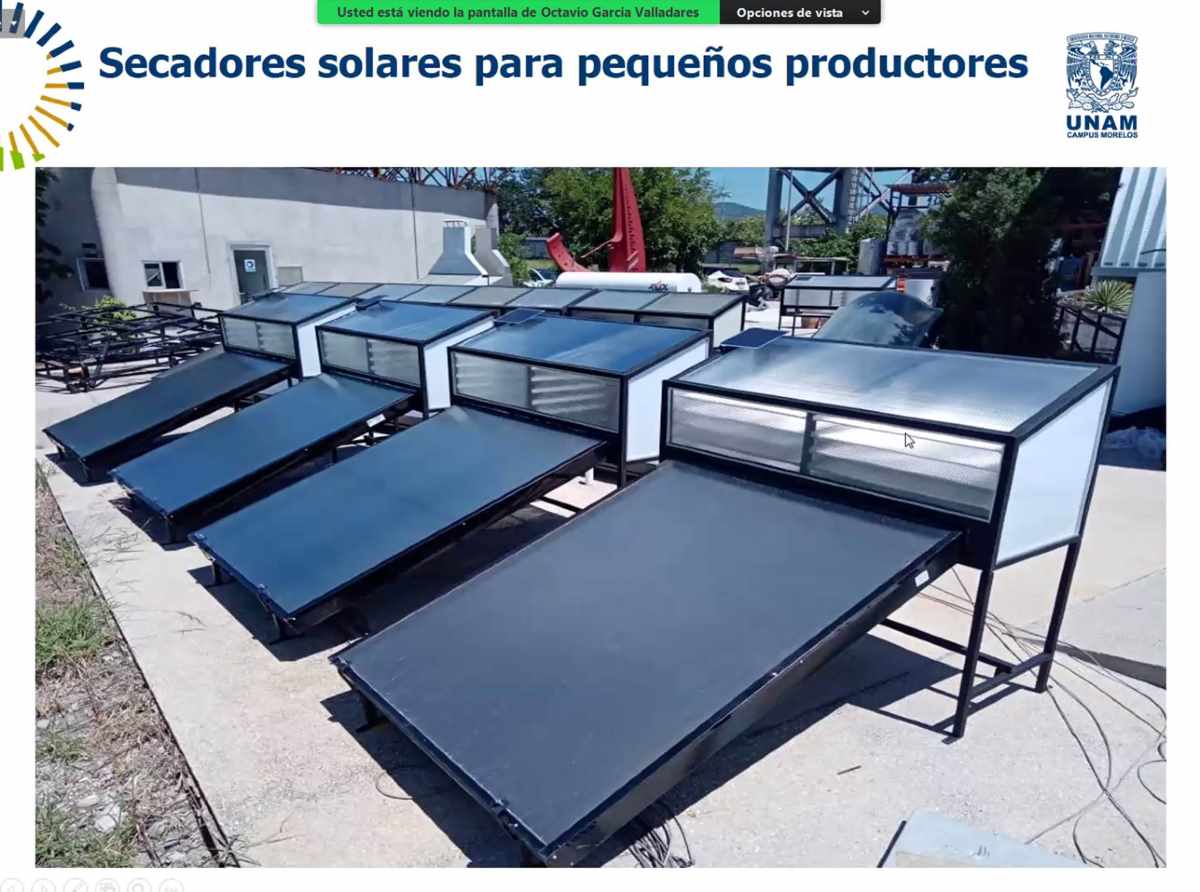Solar Drying Technology Extends Food Shelf Life, Helping Reduce Waste and Improve Sustainability
The modern solar drying technique can extend the shelf life of fruits and vegetables, while also giving them added value as healthy snacks or flour for the food industry. Learn more about this promising solution for the food industry.

Scientists at the Institute of Renewable Energies (IER) at UNAM have developed a modern solar drying technique that can help extend the shelf life of fruits and vegetables, reduce waste, and even give them added value as healthy snacks or flour for the food industry. The technique is tested on various produce, including pineapple, apple, banana, cactus, tomato, and squash blossom.
According to Alfredo Domínguez Niño, Octavio García Valladares, and Ana Lilia César Munguía, the specialists who carried out the research, one-third of food production is lost or wasted after harvest and in homes, representing a waste of resources and inputs used in production. "In general, there is more waste in industrialized countries than in developing ones," said Domínguez Niño.
Solar drying is a preservation method that reduces the moisture content and water activity of foods to minimize biochemical, chemical, and microbiological reactions. The advantages of solar drying include prolonging shelf life, guaranteeing greater availability, allowing storage at room temperature, facilitating transportation, and reducing the waste production.
Traditional dehydration methods include open-air drying and drying with fossil fuels. Still, they have disadvantages such as generating product losses, requiring long drying times, depending on weather conditions, and producing greenhouse gases. As a clean alternative, the IER scientists developed models of the indirect solar dehydrator, another direct one, and a mixed one that combines the two previous ones.
To promote the use of this technology in schools, homes, and among the general public, the IER scientists created domestic equipment that can process from 0.5 to two kilograms of fresh produce. For small producers, they developed mixed dryers with a capacity of 10 to 20 kilograms of fresh produce, while for larger-scale farm workers, they created a drying tunnel with a capacity of up to 50 kilograms of fresh produce. For larger-scale farmers, they have greenhouse-type dryers, direct or mixed, to process 100 to 1,000 kilograms of fresh material.
The IER scientists have also implemented community projects such as the Community Center for Solar Dehydration in Hueyapan, Morelos, which reduces waste and greenhouse gas emissions, promotes economic and sustainable progress in the region, and favors greater availability of nutritious products for self-consumption and sale.
Solar drying technology is a promising solution to reducing food waste and improving sustainability in the food industry. With the implementation of this technique, more nutrients from ripe fruits and vegetables can be used, and the produce can even be transformed into healthy snacks or flour for the food industry.




